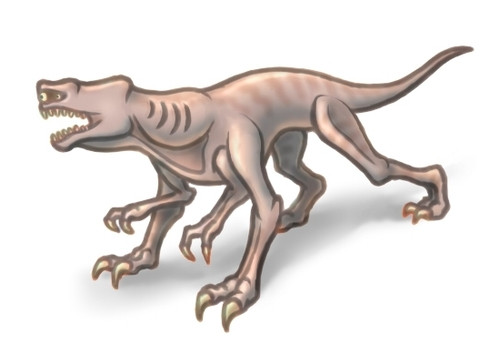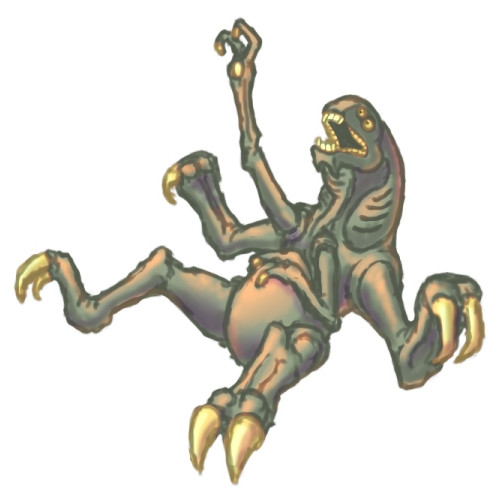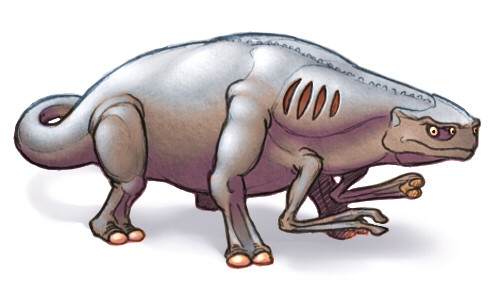HOME | DD
 Sumlax — Harragus
Sumlax — Harragus

#bestiary #vertebrates #ambarra #jungle_fauna #savannah_fauna
Published: 2015-03-14 16:25:25 +0000 UTC; Views: 438; Favourites: 9; Downloads: 1
Redirect to original
Description
Gragelaus valorisAverage size: 1,5-2 m long.
Habitat: mainly jungle, rarely mountain forests and savannah.
Danger level: very high (in the wild).
Lifestyle: harragi are social animals and the most dangerous predators in Ambarra. Even single beast can kill a jadong despite being notably smaller, and if there`s a dozen of them their power increases greatly. They are widespread, and some of their hordes can consist of nearly a hundred members (though they usually desintegrate to a number of smaller packs). Every pack has a strict hierarchy with the strongest animal as a leader, and also several ones as coordinators.
Harragi can concur perfectly, are able to solve quite complex problems and notavle for their intellect and acumen, so it`s only a concourse of circumstances they didn`t become the sentient creatures of this world. One of these circumstances is their relatively short life - no more than ten years, and the more active and powerful the animal is, the shorter its time is. Therefore pack leaders are replaced frequently, and the pack itself can desintegrate even to single animals that can provide themselves with everything they need, expand over the territory - and suddenly assemble to a new pack, terrorizing the whole area.
Heavy walls of the big cities are, inter alia, protection against harragi attacks - these animals can easily devastate a settlement. Jadongs try to scare away or destroy them if possible, but they`re very prolific and can easily renew their population.
Harragi are valuable for eliminating sick or weak animals, but often hunt jadongs` livestock, and if starving they attack everything and can even migrate underwater (though they can only hunt jointly there).
Features: in spite of the risk, harragi were domesticated by jadongs and now are used as security guards - against, inter alia, their wild brethen. They perceive their owner as a leader, allowing to keep a whole pack easily.
Their metabolism allows them to change their body temperature in a wide range (though this demands time and supplementary metabolic cost) - thus they can live in diverse environments keeping their usual activity.
Harragus has very high muscle mass/body mass ratio, and movement is its main heat source. Its radars and fore eyes are directed forward and well-developed. Their coloration is usually stripy, but can be spotty or monotonous, and the stripes can be smooth or wavy. Such variations are very rare in the wild and more common in domesticated harragi.
Other: just like jadongs, harragi were domesticated by the Masters a long time ago. Actually, this is what allowed jadong to tame them, because they obviously fear the wild ones. There were many different breeds of them back at those times, but they went extinct or mixed with "mongrels" before the start of jadong civilization, so nowadays all differences between domestic harragi come to the various unobtrusive deviations from their wild ancestor. In certain countries jadongs try to restore their diversity with varied success.
Also, as a totem harragus symbolizes loyalty, power and ability stand for oneself and others. This totem usually belongs to the soldiery, but sometimes used by other jadongs - like revolutionaries and mercenaries.
Similar species: weirong, partly rapatta and verga.
ambarra.wikidot.com/harragus
























